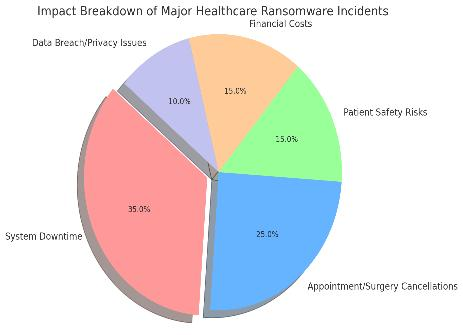Ransomware in Healthcare: Reducing Threats to Patient Care
DOI:
https://doi.org/10.21276/jccci.2025.v1.i2.5Keywords:
Ransomware, healthcare cybersecurity, patient safety, data breaches, electronic health records (EHRs), legacy systems, HIPAA, GDPR, endpoint detection, network security, incident response, Health-ISAC, WannaCry, Ryuk, medical infrastructure, cyber resilience.Abstract
Healthcare has become a prime target for ransomware attacks, a type of malicious program that encrypts sensitive information and requires ransom in exchange for its release. Beyond disrupting hospital operations, these cyberattacks become serious threats to patient care, undermining safety and confidentiality. The distinctive character of health care—where unbridled access to electronic health records (EHRs), image machines, and clinical equipment is essential—contributes to the severity of ransomware's effect. A succession of high-profile attacks, including the WannaCry attack on the United Kingdom's National Health Service and the Ryuk attack on Universal Health Services in the United States, illustrate the very real effects of such attacks, including delayed treatment, data breaches, and even death. This article discusses the root explanations for the vulnerability of the health care industry to ransomware attacks, including legacy IT systems, inadequate cybersecurity education, and negligible financial investments in cyber protections. It further delves into the wider implications regarding data protection, business resilience, and adherence to regimes such as HIPAA and GDPR. As a reaction, the article presents a multi-faced mitigation strategy of technical, organizational, and human factor solutions. Technological controls like network segmentation, endpoint detection and response (EDR), and multi-factor authentication (MFA) are advised in addition to proper data backup and incident response planning. Additionally, cybersecurity education and awareness need to become healthcare culture so that frontline workers can identify and report suspicious behaviour. Cooperation with national cybersecurity organizations and industry-specific organizations like Health-ISAC is also critical for real-time sharing of threat intelligence and coordinated response. By meeting the looming threat of ransomware with a robust defence strategy, medical facilities can not only protect their IT systems but also the quality and integrity of patient care. This paper reasserts the timely need for health providers to invest in cybersecurity as an integral aspect of contemporary clinical practice.
Downloads

Downloads
Published
Issue
Section
License
Copyright (c) 2025 Journal of Cognitive Computing and Cybernetic Innovations

This work is licensed under a Creative Commons Attribution-NonCommercial 4.0 International License.





